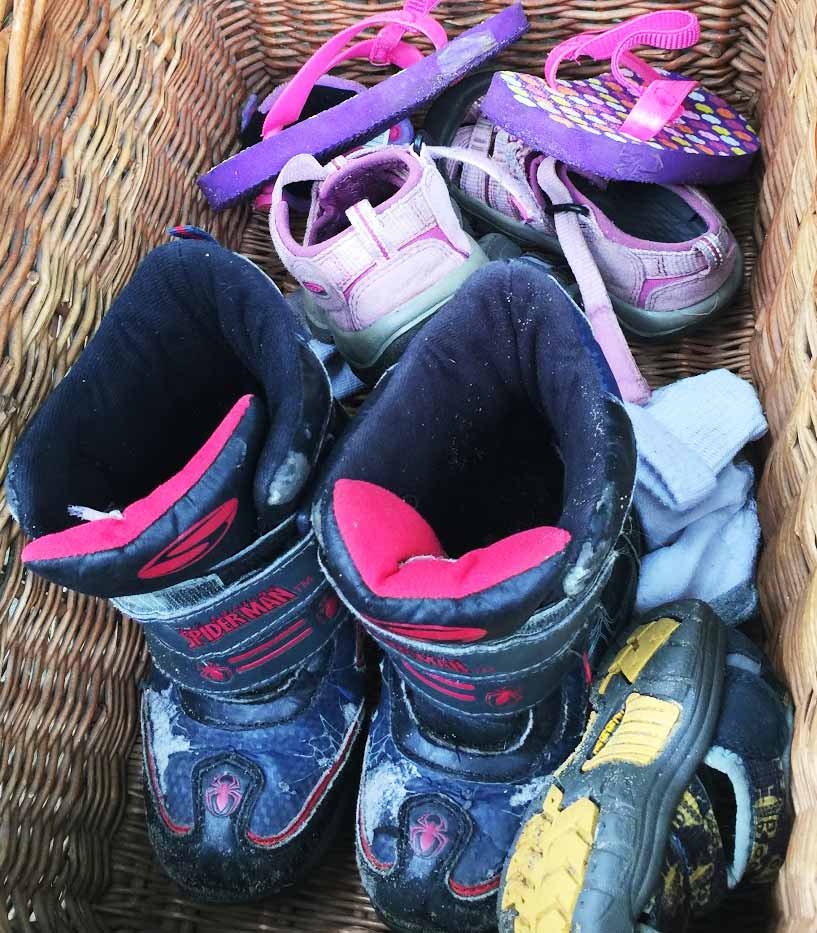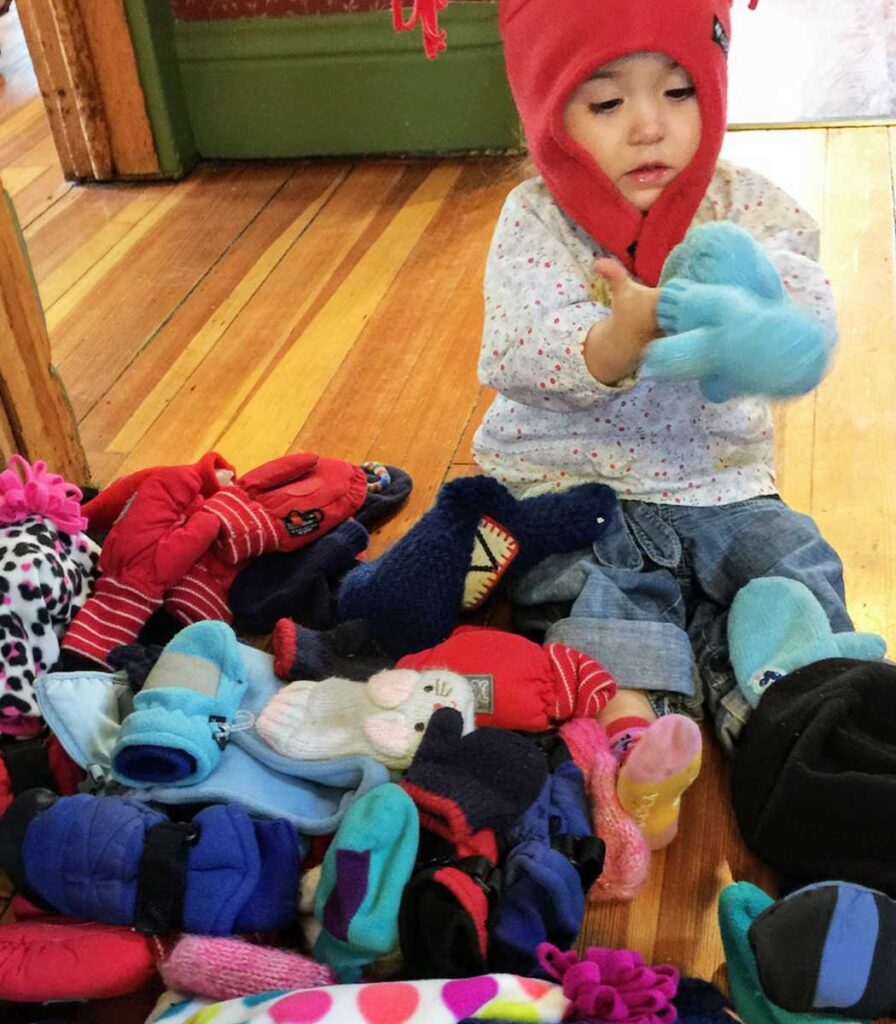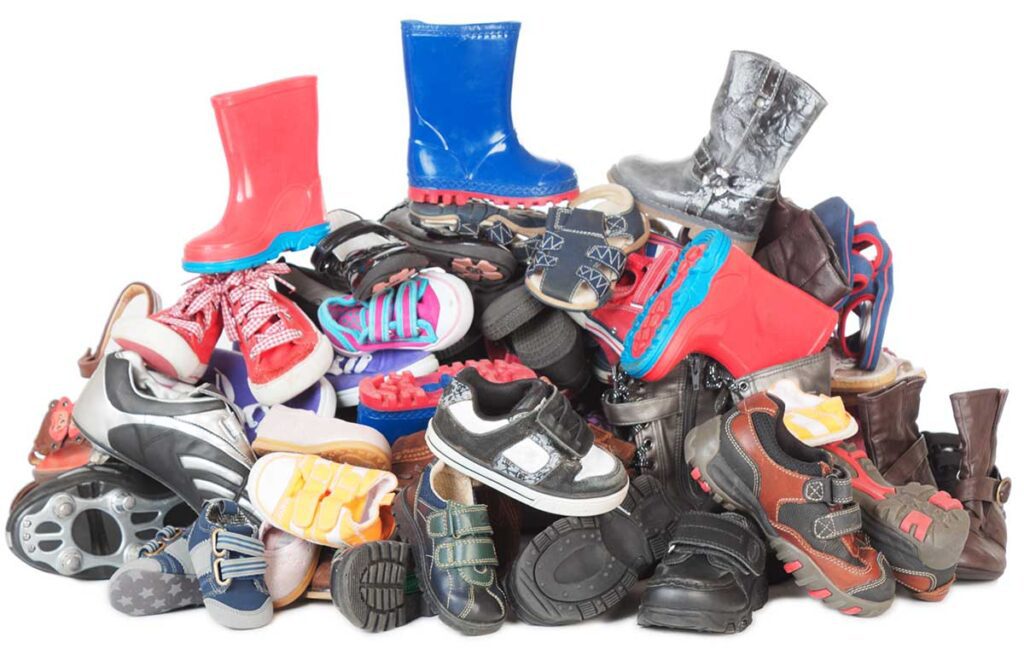Shoe Sort
Introduction
In this activity, children will practice matching pairs of shoes and begin sorting shoes by what makes them the same and what makes them different.

Gather Materials
A pile of shoes of different styles and sizes.
Note: Small parts pose a choking hazard and are not appropriate for children age five or under. Be sure to choose lesson materials that you feel are safe for your child and that you are comfortable letting your child use.
Activity
Shoe sorting is a great activity that teaches young children about attributes, organization and teamwork.
One of the most basic early math skills is matching one object with another. To understand matching, children need to grasp the concepts of same and different. Shoes only match if they are identical or just the same as something else.
This activity requires preschoolers to match the shoes in pairs and then organize them from smallest to largest. Just like that, your math learning is done for the day! But, if time allows, you can extend this math-filled game.
Young children are quick to notice attributes such as color, length, shape, size and style. They also notice when objects have attributes in common, such as shoes with velcro straps or shoes with laces.
There are plenty of math opportunities in that pile of shoes! Ask the children to sort the shoes by the following attributes:
- How the shoes close (elastic, laces, velcro or slip-on)
- Shoe type (boots, flip-flops, sandals, tennis shoes)
- Shoes for sports (tennis shoes, soccer shoes)
- The texture of the soles on the shoe bottoms (smooth, bumpy, patterned, etc.)
- Shoes with heels and shoes that are flat.
- Decorative elements on the shoes (colors, stripes, letters, lights, etc.)
While learning about attributes, children are also moving toward independence as they become expert sorters and organizers!
If the children really enjoy this activity, make it a daily chore or ask them to sort other objects such as mittens and socks.
Who needs a card-matching game when matching opportunities abound at home and in the classroom?
Let the matching begin!



